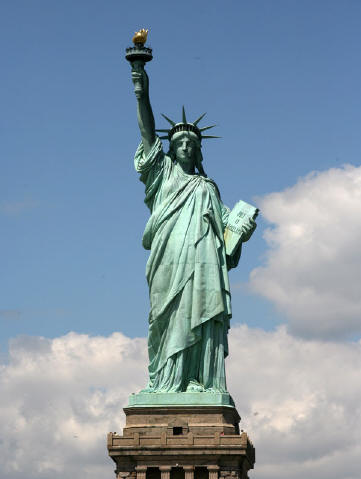
Anti-Immigration Hysteria in the U.S.

Give me your tired, your poor,
your huddled masses, yearning to breathe free;
The wretched refuse of your teeming shore,
Send these, the homeless, tempest-tost to me,
I lift my lamp beside the golden door
There is currently a surge in anti-Mexican and anti-Muslim attitudes in the U.S., displayed not only by Ted Cruz’s call for a war on Radical Islam, the carpet bombing of territory occupied by ISIS (which contains a mostly Muslim civilian population) and an increased patrolling of Muslim neighborhoods in the U.S., or by Donald Trump’s campaign promises to build a wall along the U.S.-Mexican border and to deport 11 million illegal immigrants and to ban Muslim immigration into the U.S., but also by:
the sharp increase in both anti-Mexican hate crimes (
http://www.thedailybeast.com/articles/2014/02/20/hate-crime-victimization-statistics-show-rise-in-anti-hispanic-crime.html),and anti-Muslim hate crimes (
http://www.nbcnews.com/news/us-news/hate-attacks-muslims-u-s-spike-after-recent-acts-terrorism-n482456), and bythe clamor of both anti-Mexican (
http://www.huffingtonpost.com/2013/01/31/rush-limbaugh-attacks-mexicans-immigrants_n_2593915.html) andand anti-Muslim rhetoric among conservative columnists and on Talk Radio (
http://www.rightwingwatch.org/category/topics/anti-muslim),as well as by Ted Cruz’s formation of an extreme anti-Muslim team of foreign policy advisors
(
https://www.washingtonpost.com/posteverything/wp/2016/04/14/meet-the-radical-anti-islam-conspiracy-theorists-advising-ted-cruz/?hpid=hp_hp-cards_hp-card-posteverything:homepage/card)
The current hysteria, however, is not the first expression of extreme anti-immigration sentiment in the U.S. Indeed, despite the country’s fundamental dependence upon immigration (perhaps its most legitimate claim to "exceptionalism") and the central role that immigration has played in its remarkable economic success, the U.S. has experienced numerous surges of anti-immigration fever throughout its 250-year history. Essentially, those who have benefited from immigration have frequently wanted to ban newcomers from entering the country when they perceived those newcomers (usually incorrectly) as threatening their own lifestyle and well-being.
Anti-immigration fever did not take long to emerge in the U.S. As early as 1795 (just 6 years following the ratification of the U.S. Constitution), Congress passed the Naturalization Law of 1795, which required immigrants to live in the U.S. for 2-5 years before they could become citizens. In 1798, Congress passed the Alien and Sedition Acts, four acts including the Naturalization Act, the Alien Enemies Act, the Alien Friends Act and the Sedition Act, concerned with restricting immigration. Together, these acts extended to 14 years the residence period required to become a citizen, criminalized making false statements critical of the government, and allowed the President to imprison or deport any immigrant who he believed posed a threat to national security.
Immigration increased rapidly throughout the 19th century. Between 1800 and 1900, the non-Native American population of the U.S. increased fifteen fold, from 5 to 75 million individuals. The primary source of this growth was European immigrants. As they arrived, each group encountered determined opposition to their presence in the U.S., frequently in the form of physical violence (as vividly portrayed in Martin Scorsese's film, Gangs of New York). First came the Irish immigrants suffering the devastating effects of a potato famine between 1845-1849, caused in large part by English colonial policies, and German immigrants fleeing poverty, war and religious persecution. This mass immigration sparked a Congressional investigation in which the Congressional Select Committee (July 1838) claimed that the increased immigration rates posed a threat to the "peace and tranquility of our citizens." The Committee classified immigrants as "paupers, vagrants, and malefactors...sent hither at the expense of foreign governments to relieve them from the burden of their maintenance." (
http://networklobby.org/history-immigration), a characterization and claim remarkably similar to that recently made by Donald Trump regarding Mexican immigrants to the U.S. In conjunction with the Committee’s conclusion, anti-immigration organizations, such as Order of the Star Spangled Banner and the Know Nothing Party pushed specifically to ban Catholic immigration, which constituted the bulk of Irish and German immigrants.
The
Chinese Exclusion Act was passed in 1882, which ended all immigration from China. Chinese workers, of course, had been imported in large numbers to work on the cross-continental railroad. They were quickly excluded when the need for their labor on that project ended, wherein their continued immigration was proclaimed as an economic and social threat to American society.
Anti-Chinese Political Cartoons
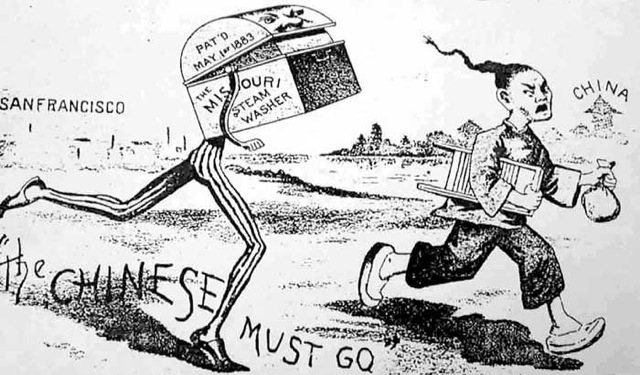
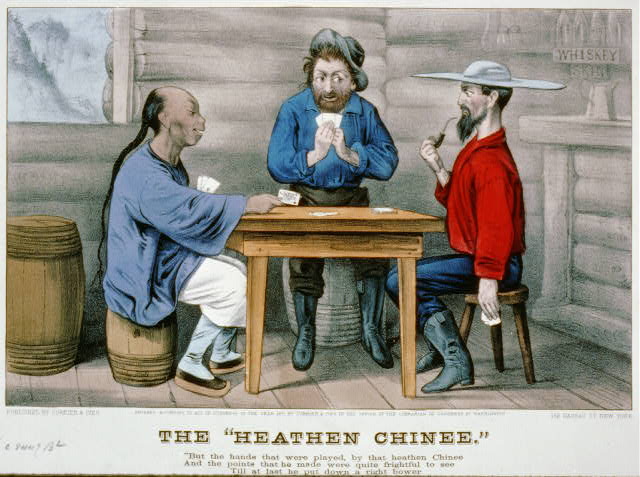


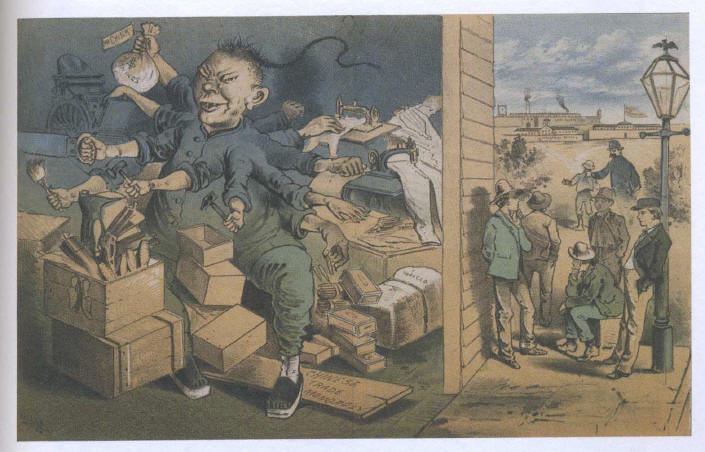
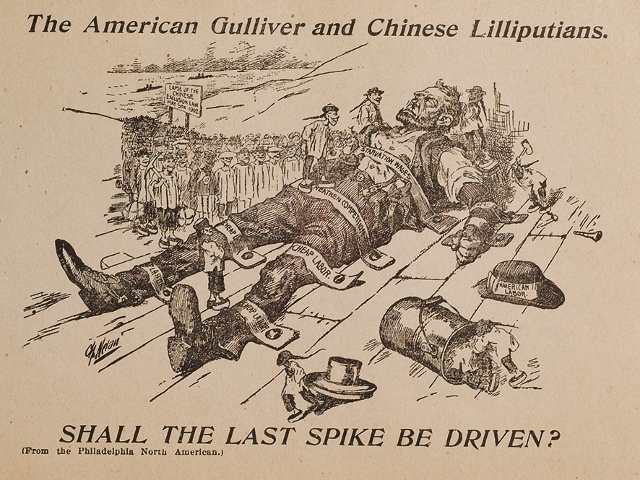
The next wave of immigrants (c.1870-1920) came from eastern and southern Europe. This wave was predominated by Catholics and Jews from Russia, Poland, Austria and Italy. These immigrants were culturally, ethnically and religiously distinct from the predominantly Anglo-Saxon Protestant population of the U.S. Opposition to these groups was fierce and resulted in a series of laws designed to restrict immigration. The Immigration Act of 1882 declared that certain classes of individuals were unfit to become American citizens, in particular those who it was feared could not support themselves and thus posed a potential burden on society. This law effectively restricted immigration of the poor (those specifically welcomed in the first line on the base of the Statue of Liberty). The 1891 Immigration Act extended the 1882 Immigration Act by adding to the classes of individuals who were considered unfit to become American citizens. Those classes included idiots, insane persons, and paupers. Any immigrants who came to the United States carrying a contagious disease were also not permitted to enter. Anyone who had been convicted of a felony, misdemeanor, or any activity deemed contrary to the beliefs and standards of society, such as polygamy, were not granted citizenship. Any person whose transportation to the U.S. was paid for by someone else was not allowed to enter into the country as well. The U.S. wanted only those who could care for themselves without the assistance of others. Following the assassination of President William McKinley in 1901 and alarmed by a fear of political radicalism and anarchism, Congress passed the 1903 Immigration Act, which added anarchists and subversives to the 1891 Act.
Fear of immigration was so widespread that Congress and President Theodore Roosevelt established the Dillingham Commission (named after its chairman,
Republican Senator William P. Dillingham of Vermont) to report on the effects of immigration. The Committee finished its report in 1911 and concluded that immigration from southern and eastern Europe posed a serious threat to American society and culture and that the U.S. was not benefiting from immigration because the immigrants were "inferior" to United States citizens. The Commission recommended that the United States no longer accept immigrants from Eastern and Southern Europe and that all future immigrants be required to pass a literacy test.
In 1917, the U.S. Congress passed the Immigration Act of 1917 (a.k.a. the Asiatic Barred Zone Act) with an overwhelming majority, overriding President Woodrow Wilson's December 14, 1916, veto. This act was the first federal law to impose a general restriction on immigration in the form of a literacy test. It also broadened restrictions on the immigration of Asians and persons deemed "undesirable" and provided tough enforcement provisions. This act also imposed an $8 head tax on immigrants and excluded any immigrant over 16 whose ticket had been paid for by someone else. The law was referred to as the Asiatic Barred Zone Act because it excluded immigration from "any country not owned by the U.S. adjacent to the continent of Asia."
The growing fear of immigration culminated in the Immigration Act of 1924, also known as the National Origins Act, because it set specific limitations on immigration based on the percent of each foreign-born group living in the United States in 1890. This year was specifically chosen in order to limit the future immigration of "inferior" peoples from eastern and southern Europe, most of whom had entered the country after that year. While the law reduced the quota of individuals allowed to immigrate from northern and western European countries by 29 percent, it slashed the number for southern and eastern Europe by 87 percent. Italy's quota, for example, was reduced from 42,057 to 3,845 persons. The law effectively stopped anymore large flows of European immigration, and all but excluded future immigration from Asia and Africa.
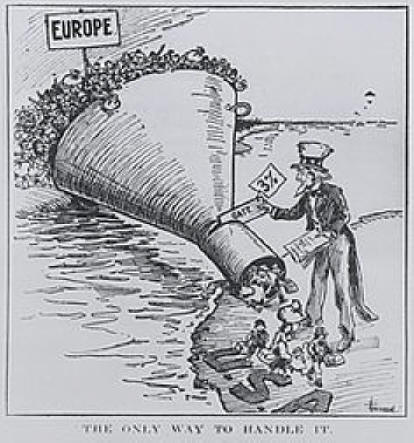
As I have indicated, particular hostility was directed against Catholic immigrants, and much of the legislation passed during the late 19th and early 20th centuries was designed to restrict further Catholic immigration. The Catholic Church was considered by many to be an evil organization bent on global dominance, which held its faithful captive by indoctrinating them in beliefs that were considered un-American, an attitude remarkably similar to that held by many Americans towards Islam today. Similarly, the founding of Catholic educational institutions, especially parochial schools, was viewed by many non-Catholics in much the same way that many Americans today view Muslim madrases, as institutions bent on indoctrinating its students into a foreign and un-American ideology. The spread of parochial schools in Philadelphia, New York, Chicago and other cities was, in fact, a major factor underlying the movement to establish public education throughout the U.S.
Anti-Catholic Political Cartoons
Anti-Catholic cartoons expressing the belief that the Catholic Church was an evil foreign organization
bent on gaining control of American society and posing a threat to American liberty

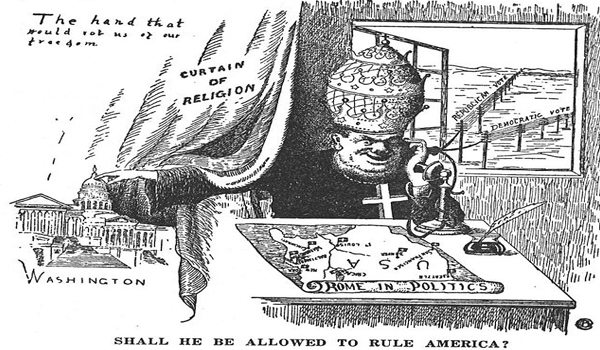
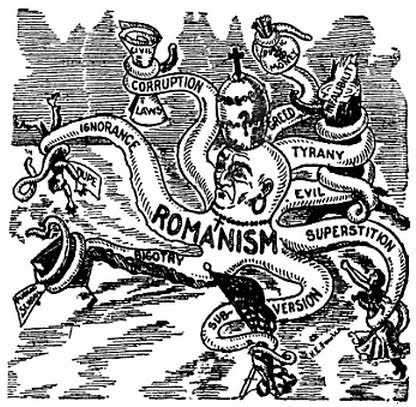
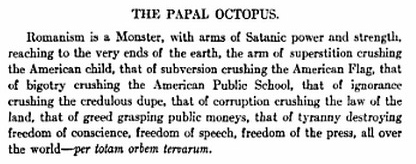
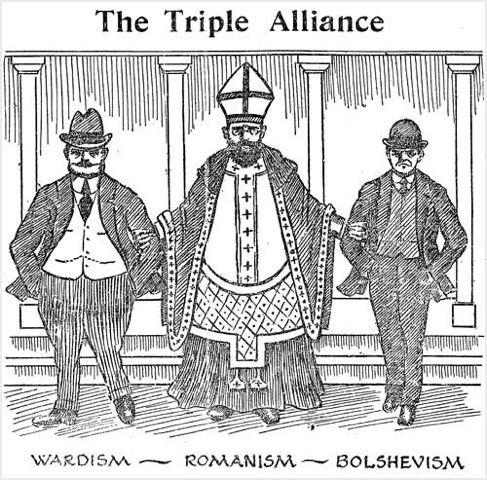
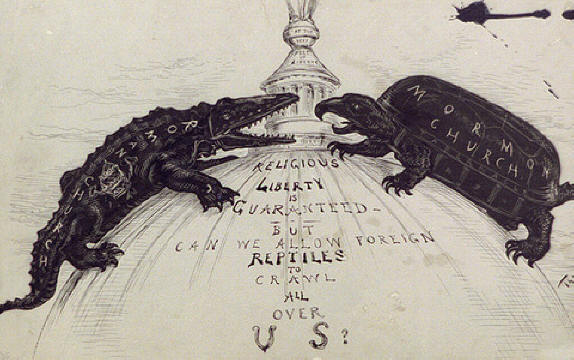
Anti-Catholic cartoons illustrating the threat
posed by the Catholic Church to American education.
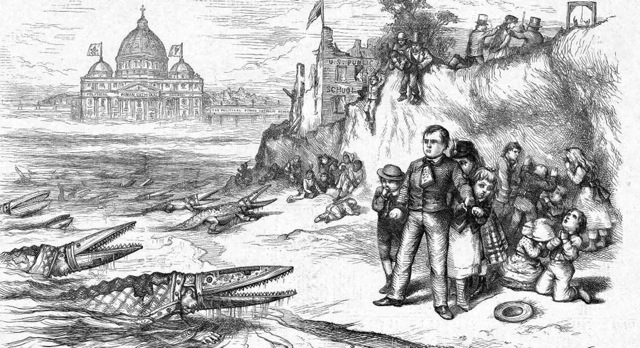
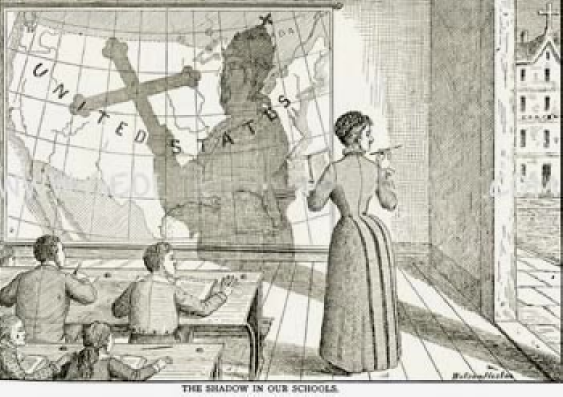

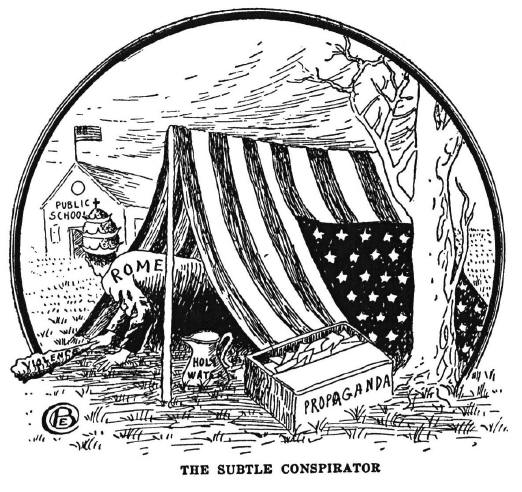

Anti-Catholic sentiment was also a significant factor contributing to the failure of Al Smith’s 1928 Presidential election campaign. Many feared that, as a Catholic, Smith would be beholden to the Pope, giving the Catholic Church an undue influence on the American Government.
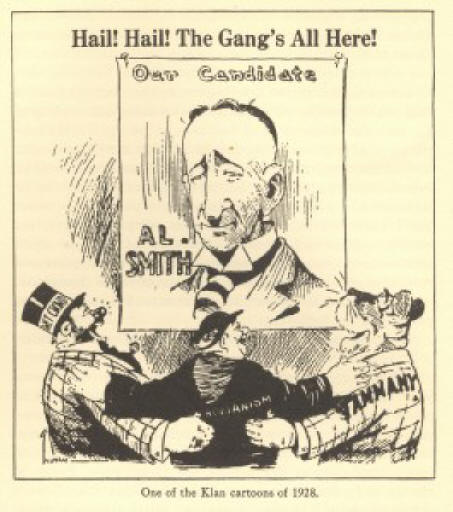
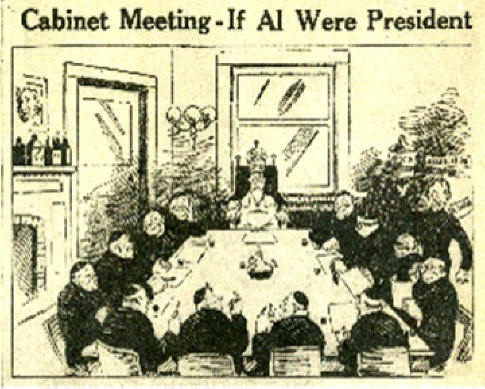
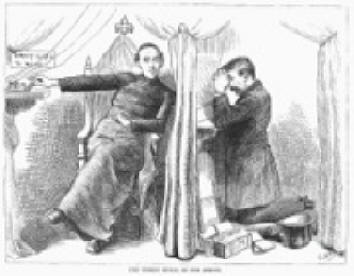
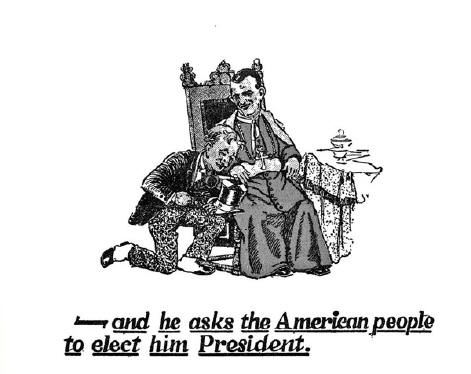
And, of course, anti-Catholicism dogged John F. Kennedy’s bid for the White House.
Interestingly, several cartoons indicated just who would save America from the scourge of Romanism.
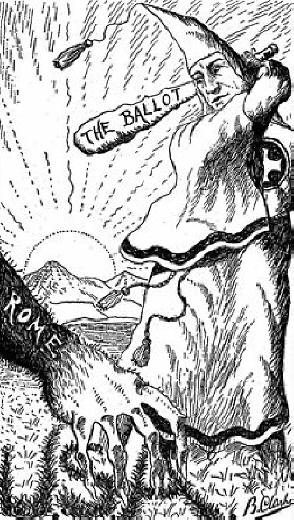
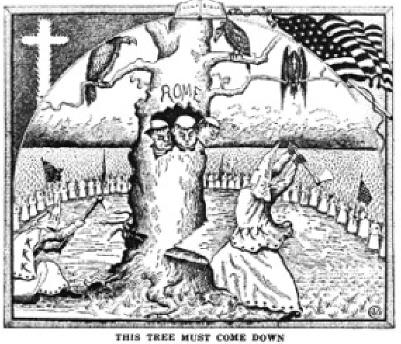

Given that both of my parents were children of Catholic immigrants --one Irish, the other Italian— had the anti-immigration forces of 100 years ago
been successful in banning Catholic immigration, not only would I not be living in the U.S., but I (and all the individuals in my family) would not even exist as living, breathing human beings, since my parents met and married in the U.S. The same could be said for tens of millions of American living in the U.S. today.
Now I know how Marty McFly felt!

* * * * *
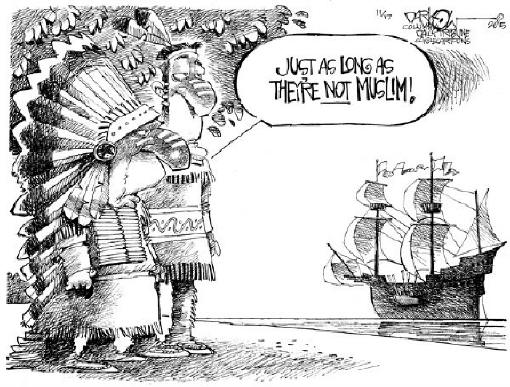
* * * * *